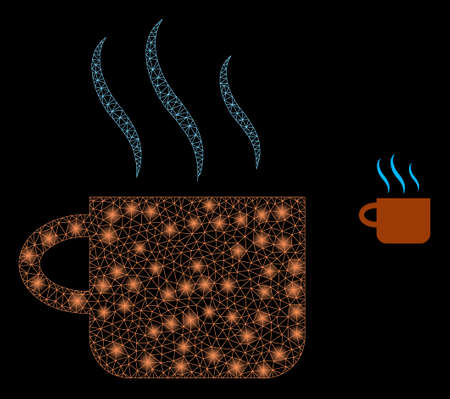Introduction to Coffee Flavor Chemistry
When you sip your morning cup of coffee—whether its a bold dark roast from your favorite diner or a smooth cold brew from your local café—you’re experiencing a complex blend of chemistry in action. The flavors we taste in coffee come down to three main components: acids, sugars, and aromatics. These elements interact in ways that can make your coffee taste bright and fruity, deep and chocolatey, or even floral and tea-like. Understanding these building blocks can help you appreciate why different coffees taste the way they do—and maybe even help you find your perfect brew.
What Shapes Coffee Flavor?
Coffee flavor starts with the bean itself, but it’s shaped by everything from where it’s grown to how it’s roasted and brewed. Still, no matter the origin or method, the chemistry inside each bean is what ultimately determines how it tastes. Let’s break down the key players:
| Component | Role in Flavor | Common Taste Notes |
|---|---|---|
| Acids | Add brightness and liveliness | Citrus, green apple, berry |
| Sugars | Provide sweetness and balance | Caramel, honey, brown sugar |
| Aromatics | Create aroma and depth of flavor | Floral, nutty, spicy, chocolaty |
Acids: The Spark of Your Brew
You’ve probably heard someone describe a coffee as “bright” or “fruity.” That’s acidity at work. Acids in coffee—like citric acid (found in citrus fruits) or malic acid (think green apples)—give coffee its crispness and vibrancy. Coffees from East Africa, like Ethiopian or Kenyan beans, are known for their high acidity and often deliver juicy, fruit-forward notes that stand out.
Sugars: Nature’s Sweet Touch
Naturally occurring sugars in coffee beans caramelize during roasting, bringing out sweet flavors that balance acidity. A medium roast might highlight these sugars best—offering flavors like brown sugar or toffee without overpowering bitterness. Coffees from Latin America often showcase these sweet tones beautifully.
Aromatics: The Soul of Flavor
Ever notice how a coffee smells before you even take a sip? That aroma is thanks to aromatic compounds—hundreds of them—that develop during roasting. These compounds give coffee its complexity: floral notes in a lightly roasted Colombian coffee or chocolaty richness in a dark-roasted Sumatran. It’s why smell plays such a big role in how we experience flavor.
Your Daily Cup, Explained by Chemistry
If you love flavored lattes from your go-to chain or prefer brewing single-origin beans at home with a pour-over setup, the same science applies. Whether you’re chasing bold espresso shots or mellow drip brews, understanding acids, sugars, and aromatics gives you insight into what makes each cup unique. So next time youre sipping your favorite roast, remember—theres real chemistry behind every delicious drop.
2. Acidity: The Bright Spark in Your Brew
When coffee lovers talk about acidity, theyre not talking about how sour a cup tastes. In the world of specialty coffee, acidity is all about brightness and liveliness. Its that crisp, refreshing pop you get on your tongue—like biting into a juicy green apple or sipping fresh lemonade. This brightness is one of the key elements that give high-quality coffee its complexity and character.
What Is Acidity in Coffee?
Coffee contains a variety of organic acids that naturally occur in the beans. These acids develop during the growing process and are influenced by factors like altitude, variety, and processing method. During roasting, some of these acids break down while others transform, creating unique flavor notes that many American coffee drinkers recognize and enjoy.
Common Organic Acids and Their Flavor Notes
Different acids contribute different flavors to your brew. Heres a breakdown of the most common organic acids found in coffee and the familiar taste profiles they create:
| Organic Acid | Flavor Notes | Common Associations |
|---|---|---|
| Citric Acid | Bright, tangy | Lemon, orange, grapefruit |
| Malic Acid | Smooth, tart | Green apple, pear |
| Tartaric Acid | Sour, grape-like | Red grapes, wine-like notes |
| Acetic Acid | Sharp, vinegary (in small amounts) | Balsamic hints, fermentation notes |
| Chlorogenic Acids (CGA) | Bitter when broken down during roasting | Can add complexity if well-balanced |
The Role of Acidity in Coffee Flavor
A good level of acidity adds vibrancy and keeps a coffee from tasting flat or dull. Think of it as the high note in music—it brings excitement and contrast to the deeper flavors like chocolate or caramel. Many American specialty coffee drinkers look for this brightness when choosing coffees from origins like Ethiopia or Kenya, where fruity and citrusy acids are more pronounced.
How Roast Level Affects Acidity
Lighter roasts tend to preserve more of these natural acids, which is why youll often find fruitier, brighter flavors in light-roasted coffees. As the roast gets darker, some of these acids degrade or change form, leading to a smoother but less vibrant cup.
Tasting Tip:
If youre trying to pick out acidity in your coffee at home, try comparing two brews side-by-side—one from a bright African origin like Ethiopia and another from a more balanced region like Colombia. Notice how one might remind you of citrus or berries while the other leans toward apple or stone fruit.
The next time you sip your morning brew and notice a flash of lemon zest or a hint of green apple tartness—thats acidity doing its magic.

3. Sugars and Sweetness: Balancing the Cup
When we talk about what makes a cup of coffee taste sweet, we’re really talking about the natural sugars found in the coffee bean. These sugars—mostly sucrose—play a huge role in how balanced or enjoyable your brew can be. But it’s not just about how much sugar is there; it’s also about how roasting and brewing affect those sugars.
What Happens to Sugars During Roasting?
Raw coffee beans are packed with natural sugars, but these don’t taste sweet until they go through roasting. During the roast, heat causes a series of complex chemical reactions, including caramelization and the Maillard reaction. These transform the sugars into flavorful compounds that give coffee its richness and sweetness.
Roast Level Matters
The degree to which a coffee is roasted has a major impact on its sweetness. Heres a quick comparison:
| Roast Level | Sugar Transformation | Taste Profile |
|---|---|---|
| Light Roast | Minimal sugar breakdown | Bright, acidic, less sweet |
| Medium Roast | Sugars begin to caramelize | Balanced acidity and sweetness |
| Dark Roast | Sugars heavily broken down or burned off | Low acidity, bitter-sweet or smoky notes |
Sugar’s Role During Brewing
Even after roasting, how you brew your coffee affects how those sugar-based flavors come through. Hotter water and longer brew times can extract more of the caramelized sugars, giving you a richer body and perceived sweetness. On the other hand, under-extracted coffee might taste sour or flat because not enough of those sweet compounds made it into your cup.
Everyday Example: Medium vs. Dark Roast at Your Local Café
If you’ve ever ordered a medium roast pour-over and then tried a dark roast espresso, you probably noticed a big difference. The medium roast likely had fruity, smooth, and slightly sweet notes—thanks to preserved sugars that caramelized just right. The dark roast? Probably bolder, smokier, maybe even bitter—that’s because many of those sugars were burned off during the longer roast time.
Understanding how sugars work in coffee helps explain why some brews feel smoother or sweeter than others. It’s not added sugar—it’s science working behind the scenes to balance your cup.
4. Aromatic Compounds: The Heart of Coffees Aroma
When you take a deep breath over a freshly brewed cup of coffee, what youre really experiencing is the result of hundreds of aromatic compounds working together. These volatile compounds are released during the roasting process and are a major part of what gives coffee its irresistible aroma — something that plays a huge role in flavor perception, especially for American coffee lovers who often seek out comforting and familiar scent profiles.
What Are Aromatic Compounds?
Aromatic compounds are chemicals that easily evaporate into the air, which is why we can smell them so vividly. In coffee, more than 800 of these compounds have been identified. While that sounds like a lot, certain groups tend to dominate and create the recognizable scents we associate with different types of coffee.
Popular Aromas Americans Love
The following table breaks down some common aromatic compounds found in coffee, the smells they produce, and how they connect with flavors familiar to American palates:
| Aromatic Compound Group | Common Smell | Familiar Reference |
|---|---|---|
| Pyrazines | Nutty, Earthy | Roasted peanuts, toasted bread |
| Lactones | Creamy, Sweet | Caramel, buttered popcorn |
| Furans | Sweet, Bready | Freshly baked cookies, brown sugar |
| Phenols | Smoky, Spicy | Campfire smoke, black pepper |
| Aldehydes & Esters | Fruity, Floral | Berries, jasmine tea |
Why These Aromas Matter
The smell of coffee can influence how it tastes. For example, a brew that smells like dark chocolate or toasted nuts might taste richer and smoother to an American coffee drinker who grew up loving brownies or peanut butter snacks. Similarly, floral or fruity notes can appeal to those who enjoy lighter roasts or flavored coffees popular at many U.S. cafés.
The Roast Factor
Roasting plays a key role in shaping which aromatic compounds stand out. Lighter roasts tend to preserve more floral and fruity esters, while darker roasts emphasize smoky phenols and nutty pyrazines — flavors many Americans associate with bold morning brews or classic diner-style coffee.
Tip for Coffee Lovers:
If youre looking to match your favorite flavors with specific aromas, try sniffing your coffee before taking a sip. Youll start to notice patterns between what you smell and how your brain interprets taste — its one of the best ways to train your palate and find your perfect cup.
5. Brewing and Flavor Expression
In the U.S., coffee lovers use a variety of brewing methods to craft their perfect cup—each one affecting how acids, sugars, and aromatics show up in the final flavor. Whether youre into your morning drip machine, a carefully poured V60, or a refreshing cold brew, the method you choose plays a big role in how those natural compounds behave.
How Brewing Methods Influence Flavor
Different brewing techniques extract acids, sugars, and aromatics at different rates. Heres a quick look at how some popular American brewing styles influence these key flavor elements:
| Brewing Method | Acid Expression | Sugar (Sweetness) | Aromatic Complexity |
|---|---|---|---|
| Drip Coffee Maker | Moderate | Balanced sweetness | Mild to medium aroma |
| Pour-Over (e.g., V60, Chemex) | High clarity and brightness | Enhanced sweetness due to precise control | High aromatic expression |
| Cold Brew | Low acidity | Smooth, mellow sweetness | Mild aromatics with chocolatey or nutty notes |
The Role of Temperature and Time
Hot brewing methods like drip and pour-over extract acids quickly due to high temperatures. This gives the coffee a bright, lively character. On the other hand, cold brew uses time instead of heat—usually steeped for 12–24 hours—which reduces acidity but brings out deeper sweetness and smoothness.
Grind Size Matters Too
If youre using a pour-over or drip brewer, a medium grind works best to balance acid and sugar extraction. For cold brew, a coarser grind is ideal since it steeps for much longer and needs less surface area exposure.
Pro Tip:
If you love fruity acidity and floral aromas, try a pour-over with a light roast. Prefer smoother, sweeter notes? Cold brew made with medium or dark roast beans might be your jam.
No matter which method you choose, remember that brewing is where science meets personal taste. Experimenting with different techniques can help you find your own flavor sweet spot!
6. Understanding Flavor for Better Coffee Choices
Now that weve explored how acids, sugars, and aromatic compounds shape the flavor of coffee, it’s time to use that knowledge to make smarter choices when buying or ordering your next cup. Whether youre picking up beans at a local roaster or browsing a café menu, understanding what influences flavor can help you find brews that match your taste preferences.
How Acids Affect Taste
Acids bring brightness and liveliness to coffee. Here’s a quick guide to common acids and their flavor notes:
| Acid Type | Flavor Profile | Common Origins |
|---|---|---|
| Citric Acid | Lemon-like, vibrant | Latin America |
| Malic Acid | Apple-like, smooth tartness | Central Africa |
| Tartaric Acid | Grapey, wine-like tang | Ethiopia |
| Phosphoric Acid | Sparkling, cola-like quality | Kenya |
If you enjoy fruity or bright coffees, look for beans from regions like Ethiopia or Kenya where these acids are more prominent.
Sugars and Sweetness Balance
Sugars naturally present in coffee beans caramelize during roasting and contribute sweetness and body. Light roasts preserve more natural acidity and subtle sweetness, while darker roasts bring out deeper caramelized sugars with chocolatey or nutty flavors.
Roast Level vs. Flavor Characteristics
| Roast Level | Taste Notes | Ideal For… |
|---|---|---|
| Light Roast | Bright, fruity, floral, acidic | Lovers of complex flavors and origin characteristics |
| Medium Roast | Balanced acidity and sweetness; chocolatey or nutty undertones | Everyday drinkers who want balance and richness |
| Dark Roast | Bitter-sweet, smoky, bold body; low acidity | Fans of strong, rich coffee with less sharpness |
If you’re sensitive to acidity, go for medium or dark roasts where sugars take center stage over acids.
Aromatics: The Hidden Layer of Flavor
Aromatics—compounds released when coffee is brewed—add depth and complexity. These include floral (like jasmine), spicy (like clove), earthy (like cedar), or sweet (like vanilla) notes. Pay attention to tasting notes on packaging—they’re often clues to the aromatics present in the brew.
Tips for Choosing Coffee You’ll Love
- Read the label: Look for tasting notes and origin information. If it says “citrus” or “bright,” expect higher acidity. If it says “chocolate” or “rich,” it may be lower in acid with more caramelized sugars.
- Start with what you know: If youve enjoyed Colombian coffee before, try others from Latin America with similar profiles.
- Ask your barista: Don’t be shy! They can recommend based on roast level and flavor profile.
- Create a flavor journal: Keep track of coffees you like—note roast level, origin, tasting notes—to discover patterns in your preferences.
- Experiment with brew methods: French press highlights body and sweetness; pour-over enhances brightness and clarity; espresso intensifies all flavors.
Your perfect cup is out there—it just takes a little curiosity and some basic flavor knowledge to find it!

